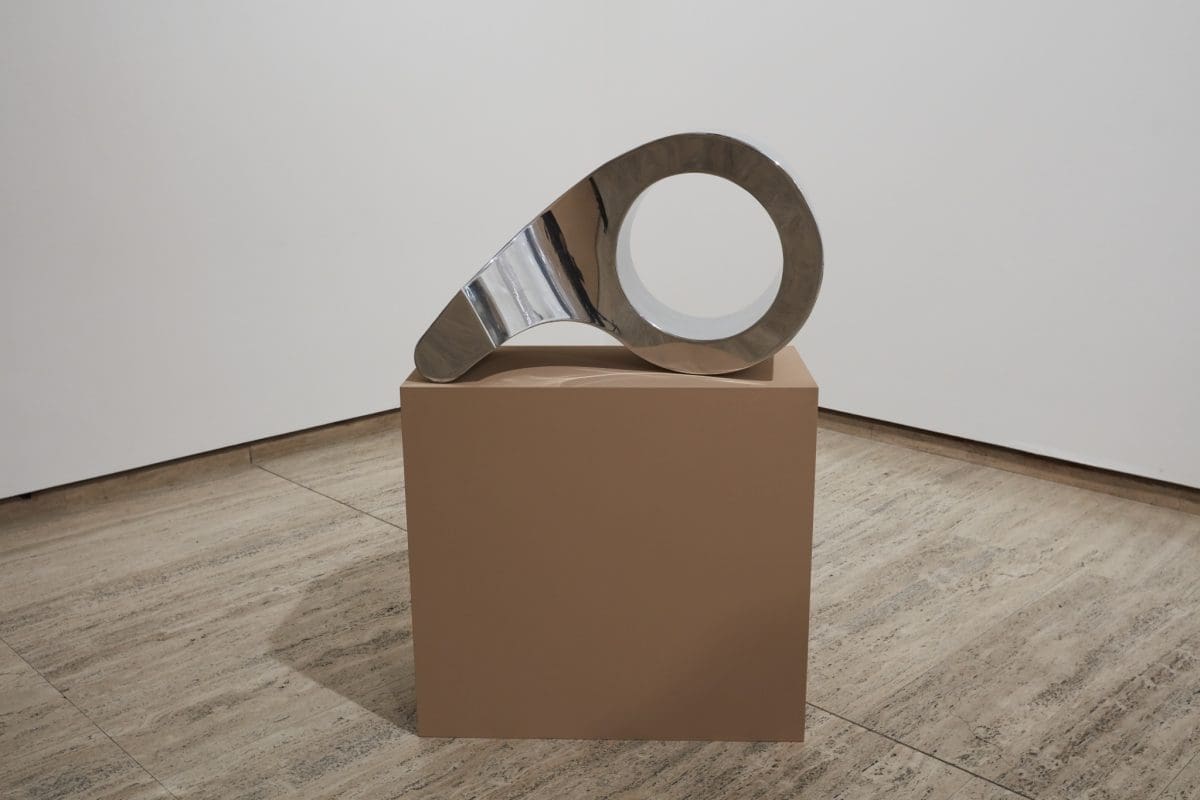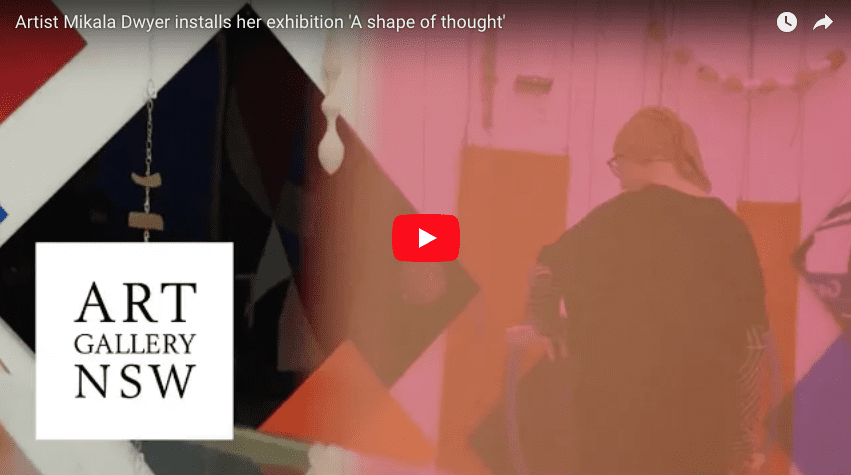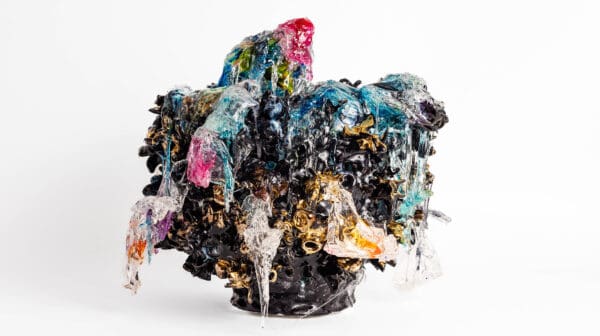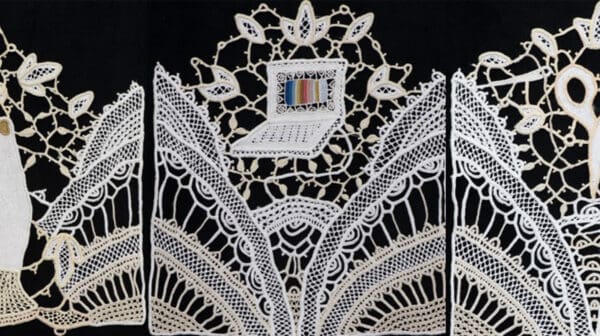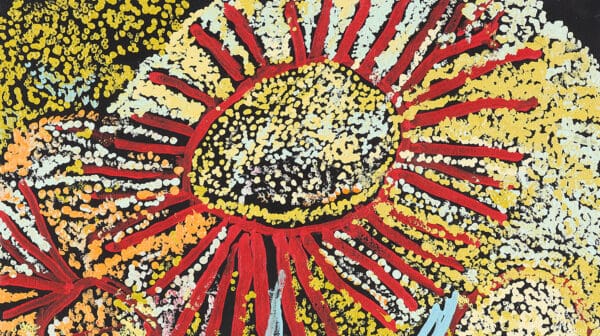Sometimes you get to laugh out loud with delight in an art gallery. a shape of thought, the solo show by Mikala Dwyer at the Art Gallery of New South Wales, is so packed with wit, invention and energy that at times I caught myself emitting little happy gasps. Bold experiments in colour, tactility, materiality and process variously stretch up to the ceiling, reach out to each other, join hands, appear to refuse gravity and plummet to the ground.
A silver Mylar magic carpet floats mid-air, held up by a fleet of inflatable silver zeroes bobbing above it. Cleverly installed in the escalator-well so that visitors first encounter the work below them, not above, The silvering, 2017, brims with allusions: zero gravity, the void understood through a dollar-shop aesthetic, Warhol’s Silver clouds, and Minimalist concerns with the physical experience of work in a space.
Square cloud compound, 2010, also hovering mid-air, nearly fills one room. Part epic kid’s blanket fort, part tent city, part soft sculpture, its simultaneously internal and external spaces reflect the title’s suggestion of both confinement and freedom. Clinging to the walls for precarious hold, it resonates in the diasporic and unstable present.
Next door, the transparent plastic, suspended boulder-like forms of A weight of space, 2017, are juxtaposed with the nuggetty plinth-based aluminium sculpture Hollowwork (ringing), 2013. In a playful iconoclasm inverting high-art expectations, Dwyer’s boulders appear weightless and transmit light, and the heavier metal Modernist sculpture derives its form from a ring her jeweller mother made.
Made with help from the artist’s friends, this ritual circle of works evokes the collective flux of human creativity.
Inventiveness peaks in the next room. Divisions and subtractions, 2017, assembles forms in a ceremonious circle. A wild assortment of worked materials and found objects are held in breath-taking and sometimes hilariously anthropomorphic relation to one another. Lumps of glass slump dejectedly over a metal frame, colourful acrylic props are precariously stacked like tipsy monuments, a rudimentary low wall is marshalled from slabs of clay still in their wrappers, and plants somehow thrive suspended in clear plastic bags. This is process made visible with blithe disregard for finish or polish and an utterly democratic approach to material value that seems to refuse the economics of the fetishistic art object. With nothing complete or fixed, each assemblage appears ready for reconfiguration at any time. Made with help from the artist’s friends, this ritual circle of works evokes the collective flux of human creativity.
In the final room, collectively titled The letterbox marys, 2017, more free-standing and wall sculptures accompany six huge paintings that drop like banners and stretch across the floor. As geometric abstractions, the paintings recall the spiritual beginnings of the genre, both within and outside traditional art-historical trajectories, and their ceiling-high scale and intensely saturated colour evoke stained glass windows in Modernist Western churches. They’re strangely persuasive and quite a trip.
Australian audiences too seldom experience major presentations by significant local contemporary artists. Installed together like this, the various components of Dwyer’s works riff dynamically off one another to create exuberant new expressions of energy and connection between esoteric and material concerns.
A shape of thought
Mikala Dwyer
Art Gallery of New South Wales
Until 4 February







